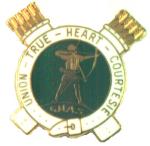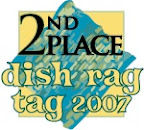For the next stage of my research project, I'm reading about qualitative research methods. There's something very common-sense about the notion that we can't find out anything about the process of meaning-making and interpretation except by participating, observing, and flexibly adapting one's investigation as the picture emerges.
But the literature on this methodology reveals why it must be carefully justified. The human being is both the object of study (in other words, the objects are in themselves subjects) and the tool being used in the study (the researcher is also a human being). This confuses the careful delineation of object, observer, and instrument that might be considered basic to the scientific method.
What's clear, though, is that the inquirer's self-insertion into the process of inquiry is the only way to discover previously unseen aspects of the problem at hand. Some questions about human experience can't be completely specified before observation begins. Instead, the shape of the question and answer alike emerge as the investigation proceeds.
One way to think about this process would be as the uncovering of the unarticulated or as-yet unformed meanings. Many qualitative researchers are hoping to find out what their subjects don't fully know -- the structures that underlie their conscious meanings. That's certainly true of my project. It's not that I want to put myself in a superior position to my subjects; it's that I want to have a broader view based on seeing them in all their variation and similarity, and a deeper view based on a dual role as participant and observer.
To me, there is nothing more powerful in scholarship than bringing what is implicit -- present as a structure for thinking, but unthought in itself -- into full view. Being able to think through something that before simply limited or channelled thought is the most powerful consequence of being educated. If we're lucky, we get this training and practice at the same time we get the more common form of education, which is turning what starts as explicit into an implicit way of being. This is what happens in disciplinary training, as we take structures that are presented as fully conscious chunks of content and process, and transform them by constant use into a set of lenses through which the world appears shaped already into disciplinarily-convenient forms and categories.
When the two forms of learning -- implicit to explicit, and explicit to implicit -- inform each other in a single inquiry, we are in the most profound realm of interdisciplinarity. That's what I'm hoping to emphasize in my project, although I've thought less about the latter, discipline-specific contribution. Now that the chiasmus is formulated, though, perhaps an appreciation of that side will emerge more clearly.
Subscribe to:
Post Comments (Atom)





No comments:
Post a Comment